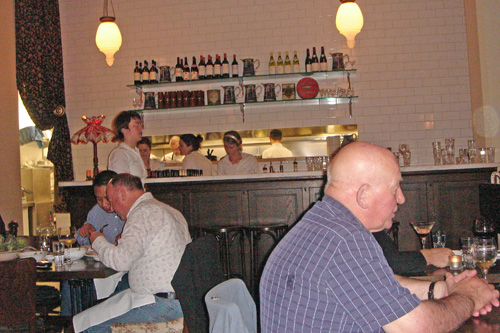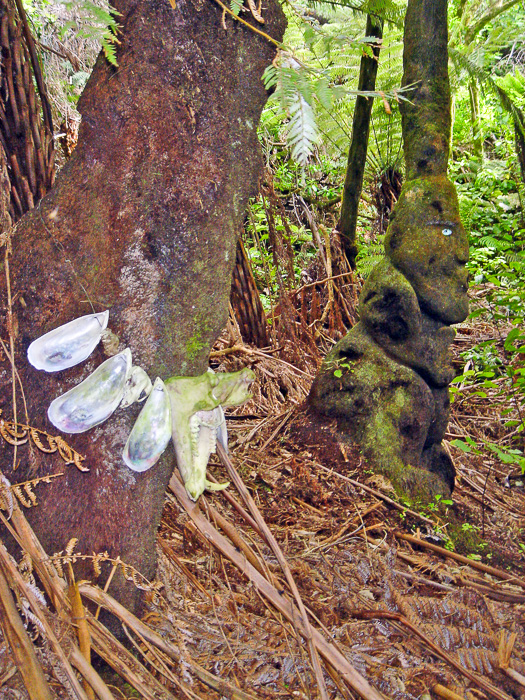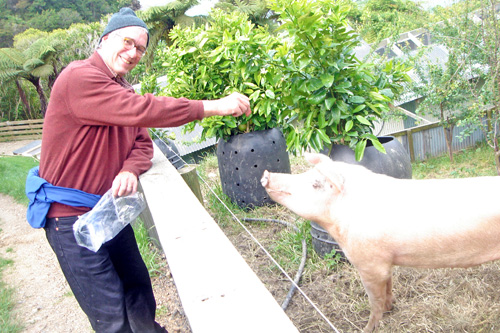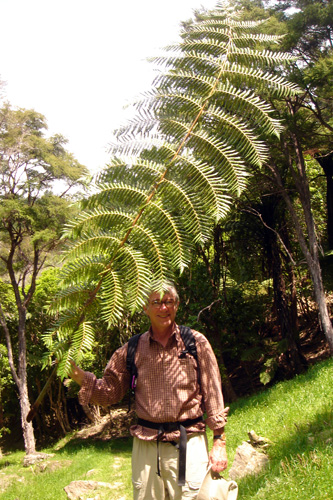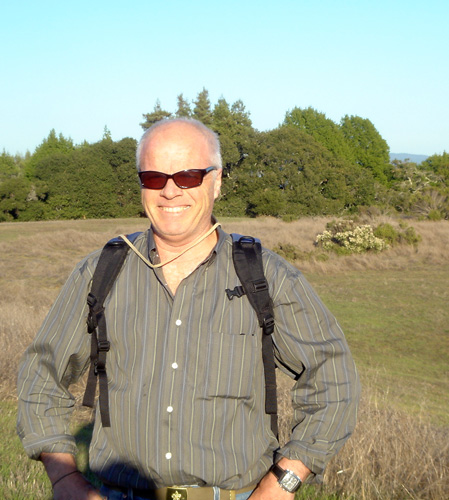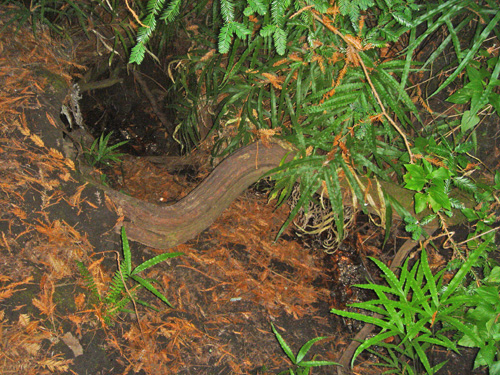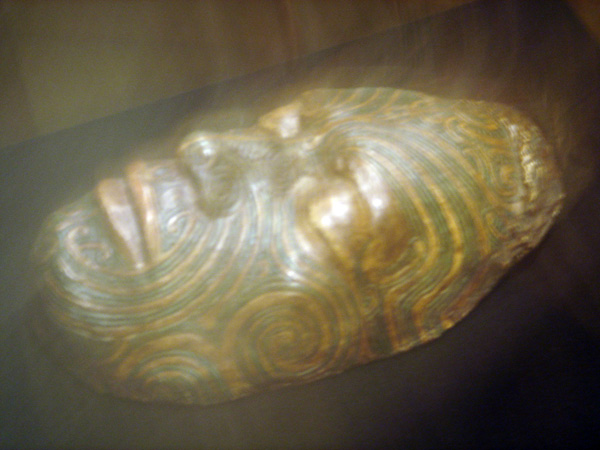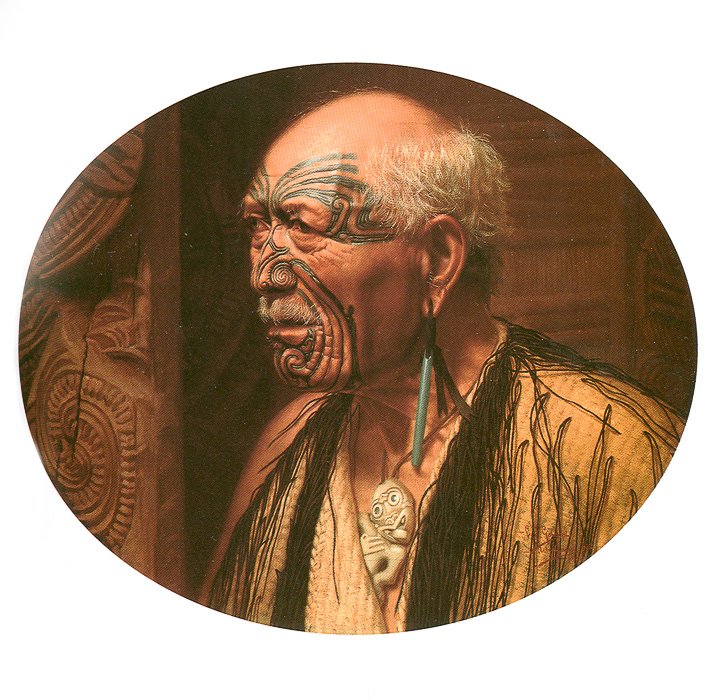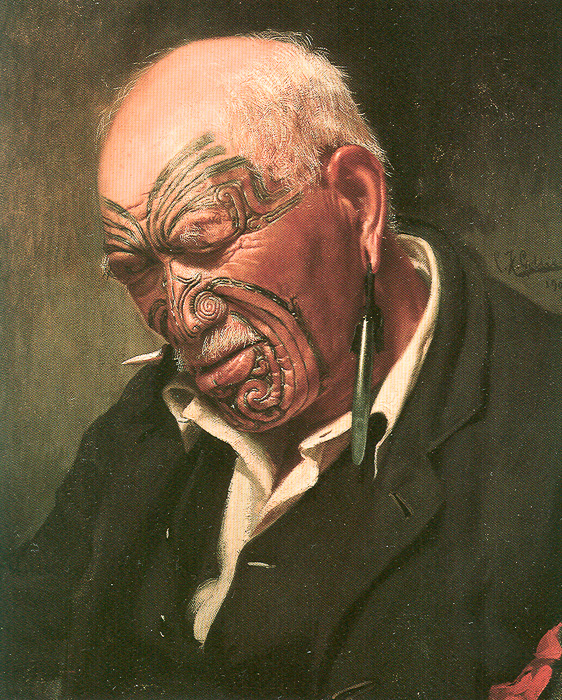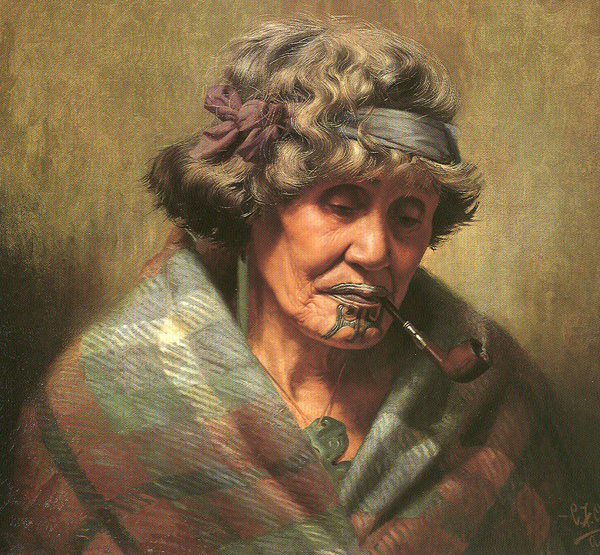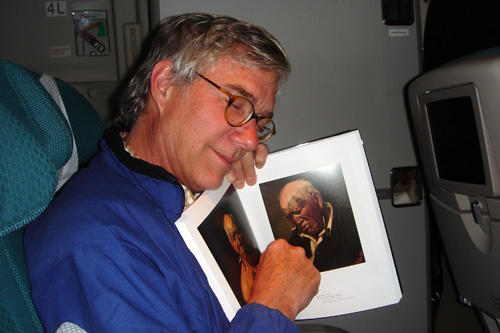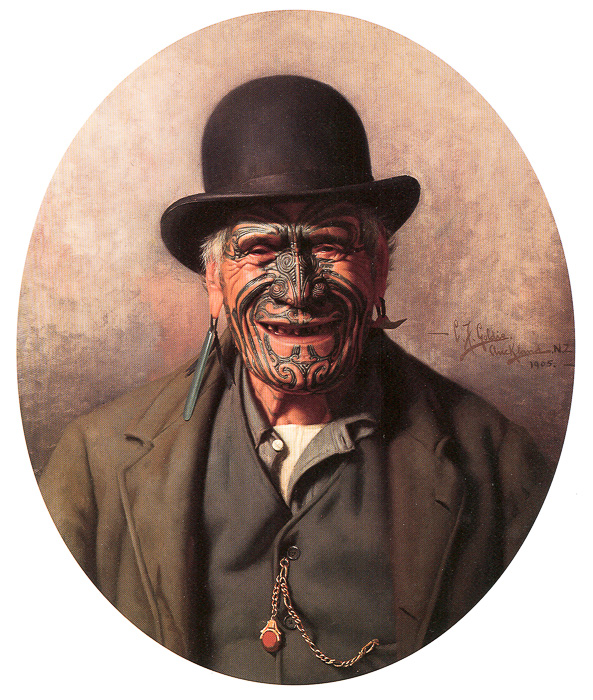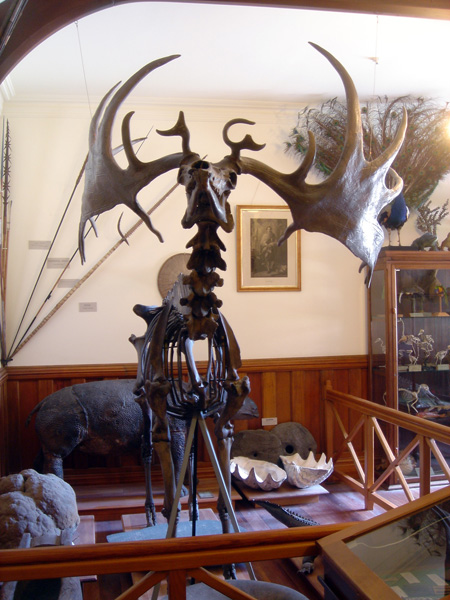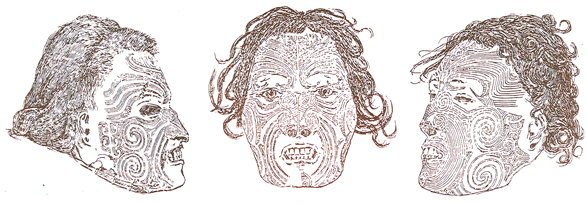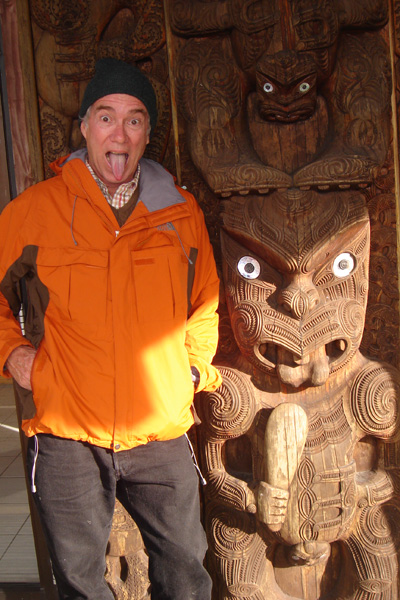
We had dinner in a Nepalese restaurant, Jewel of Nepal, in Wellington with three ex-pat Americans (two of them graphics programmers at Peter Jackson’s Weta Workshop, whose Weta Digital unit did the FX for Lord of the Rings and for King Kong). Joe Ardent (second from right) and his friends Francisco and Vanessa. Joe made some of the rocks in King Kong.
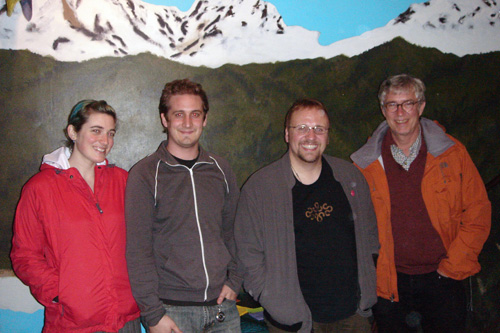
Big Myke Halstead also joined us, a true Kiwi; I picked up these contacts via answers to my blog note that I was visiting NZ. Great to meet some locals. The waiter seemed like a sherpa, Tibetan.

In Christchurch now (though most of these photos are from Wellington, like this is a sculpture over a square in Wellie), a third of the way down the southern island of NZ. It’s a bringdown to be back in a city. I was so relaxed among those tree ferns at Lochmara Lodge. Not eating so well in this town. I’m tired of heavy restaurant meals. NZ does have this tendency to load on rich sauces.
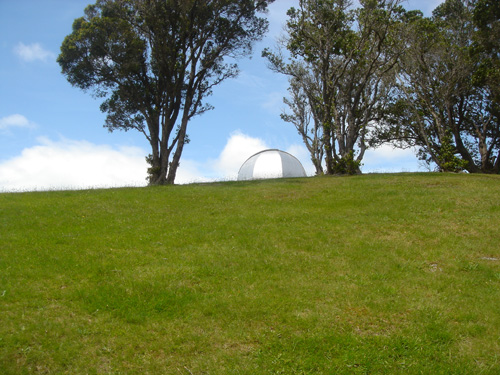
[UFO spotted in Wellington.]
On the train to Christchurch it was brilliantly sunny on the sea, the color is called New Zealand teal. The rear car of the train was open, like a flat car with railings and a sun shade, leaning there watching the sea my heart leapt up. “I’m on vacation! And I never have to go back to work at all…” The open car so carefree and unsafe and (therefore) un-American.
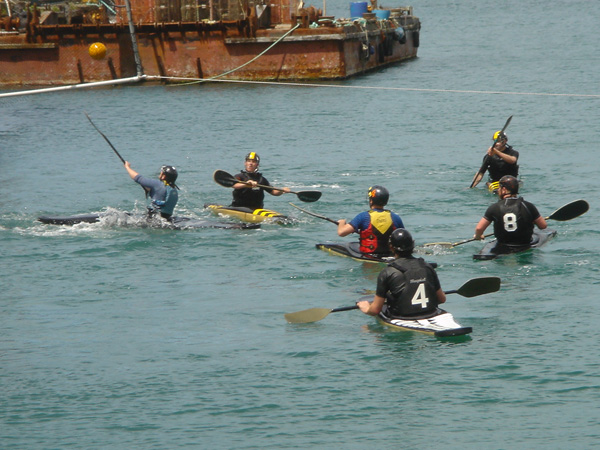
[Krazy Kiwis playing kayak ball in the Wellington harbor during lunch hour.]
Saw a nice little modern art show in the Christchurch gallery, Out of Erewhon as Samuel Butler’s novel of that title was inspired by this part of the world.
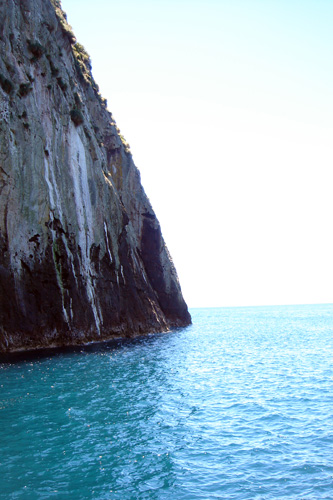
[The forbidding, cold, murky waters off the Poor Knights Islands. “Subtropical,” means cold as Monterey Bay, I found out.]
Thinking about the Polynesian rats destroying fantail birds (they hover like helicopters), or possums killing kiwis. Invasive species. Kudzu. Something like this is happening worldwide on the level of memes. Even in New Zealand, the papers have gossip about Britney’s “inelegant expanse of bare bosom.” I see a chapter in PS2 called “Meme Wars.”
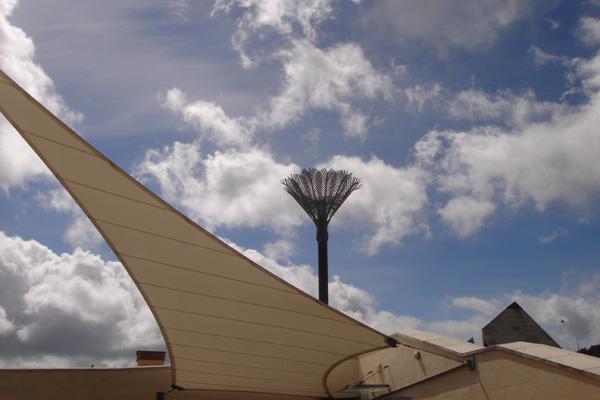
[Photo by SR, in the Civic Center Square in Wellington.]
Before the Polynesians arrived on New Zealand — only about 700 years ago — bringing their pigs, dogs and so on, NZ was a kingdom of birds. There were lots of large, flightless birds like the kiwi and he moa. The giant moa birds were like ostriches, about 12 feet tall. Destroyed by the Maori. The Europeans, starting with whalers and sealers, then convicts, displaced many of the Maori. At some point rats arrived, perhaps in a Polynesian boat or, for sure, on James Cook’s ship.
More Asians are moving to NZ now, though I don’t think they can fully displace the Europeans. Are there some races or species which settle in and never get displaced at all? I think of kudzu, of roaches and rats, of biological or memetic stasis forces that somehow are very hard to oust, of invasions that quell any further novelty. But eventually even Republicans can lose an election.
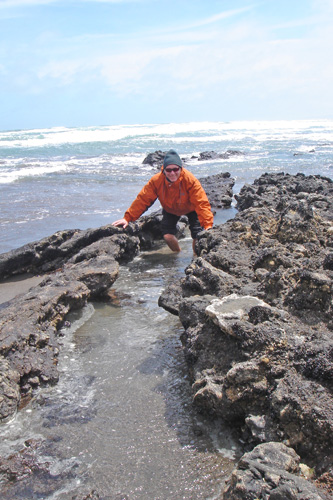
[On a long beach of the Tasman Sea near Raglan.]
Imagine in PS2 some aliens who are very dull and hard to get rid of. A lowest-common-denominator kind of race. Though it’s dull to read about dull aliens. I’d need some competitors. Maybe have the bad, dull aliens look cute, like kiwi birds, and call them the Kang. And have some novelty-enhancing good aliens who are misleadingly ugly, like stingrays, say, and call them the Rull. I did something like that in Spaceland. The Kluppers look nice, but they’re bad, and the Dronners look like devils, but they’re good.

I feel like I keep having the same dream, or rather, extensions of a single on-going dream. Like reporting to work every night. The dream work. This often happens on vacation, the planning of the day sloshes over into travel dreams at night. Looking for a room, a restaurant, a train.
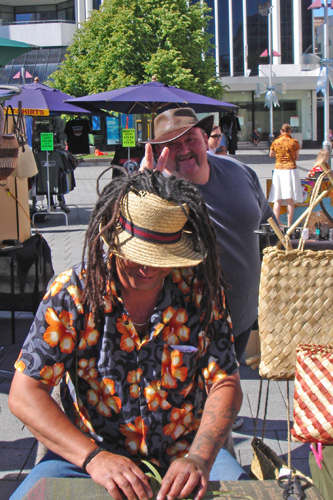
Looking at stylized fern designs painted on a Maori waka (canoe). The fern is really the dominant shape in the undisturbed original New Zeeland bush (as they call the forest). The fiddle heads, the scrolls, and the arching fronds. Zhabotinsky scrolls. They’re everywhere in Maori art.
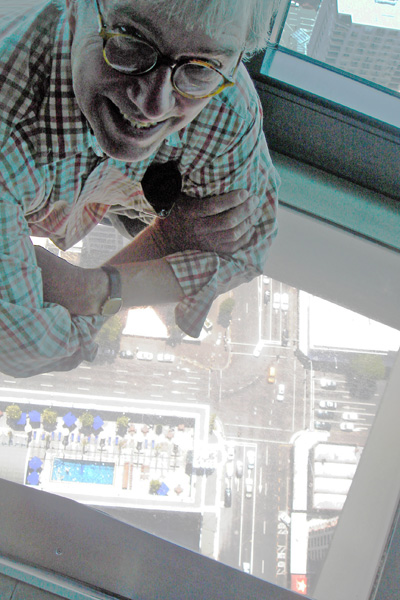
The Kiwis love dangerous things, I think it’s very hard to sue anyone there. On the way out of the country we stopped in the immensely tall Sky Tower in Auckland, where you can walk around on a Plexiglass floor off, if you like, jump off the damn thing and be lowered to ground, decelerating from 85 km per hour.
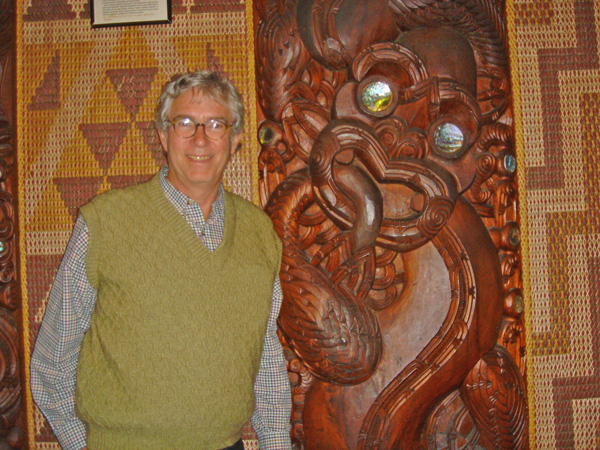
Several museums we visit (in Auckland, Wellington, and Christchurch) have installed Maori meeting houses (marae), and we visit one near Pahaia as well. They chisel faces on the wooden posts, usually the faces are asymmetric, heads to one side, with their tongues sticking out in a gesture that’s often part of a kind of battle dance called a haka. Every part of the inside of a marae is covered with the faces, its like a realization of the panpsychic notion that everything is alive.
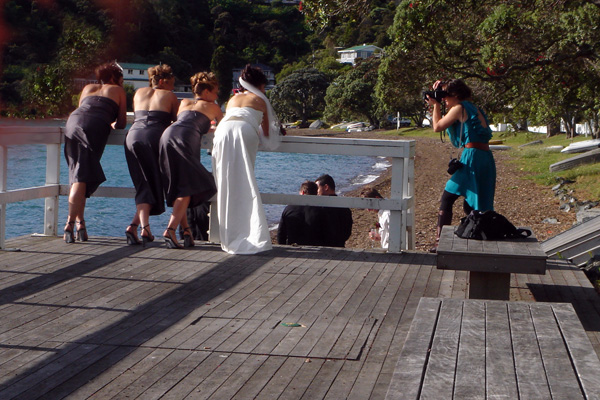
[Photo by SR, Wedding party in Russell]
I see a scene in PS2 where Bixie is freaking out over everything looking like a face. This harks back to the scary peyote hallucinations I had in 1966, in which everything became a face, even a blank wall. I was 20.

Went to a service at the Christchurch cathedral; I was thinking about PS2. Maybe PS2 has Jayjay and Thuy on a colony world like New Zealand, and in PS3 they go back to Earth. I finally “get” the idea of colony worlds, now that I’m Down Under.
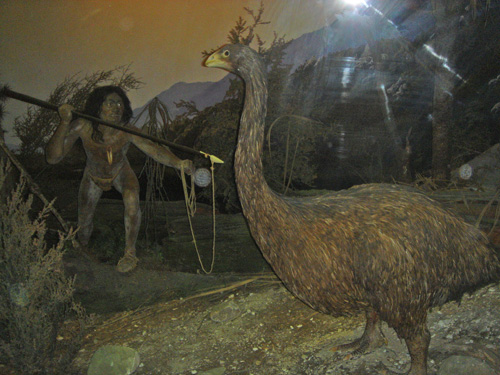
Looked at differently, Earth itself is like a remote little country relative to the big Galactic civilization. We humans and mammals are like moas and kiwis maybe. And the invading destructive “Polynesian rats” are meme eaters. In some way all of us Earthlings are as innocent and defenseless as flightless birds.

If aliens show up we should do like the Polynesians (or the moas) should have: eradicate the visitors as quickly as they arrive.
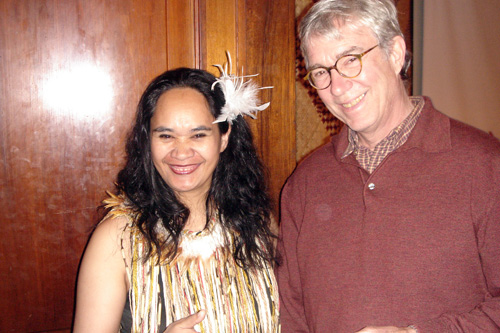
I think of Business 2.0 in Accelerando. I saw an article in the paper that offshore venture capital companies are buying up New Zealand companies, they expand their debt, restructure them, and then sell them when their stock valuation is high. Easy to imagine aliens doing that to Earth. But in some other kind of way than just with finance
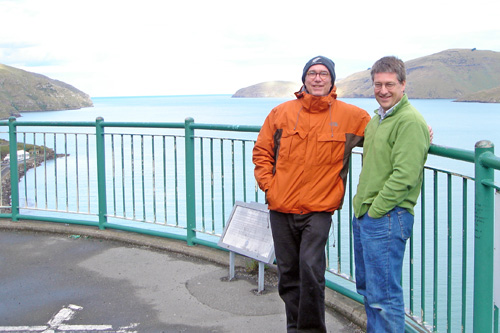
After visiting with fellow Cellular Automata-enthusiast Crile Droscher in Lyttleton near Christchurch, I’m trying to think of a CA to emulate water running in wavy pulses down a window pane. Crile wants to model braided rivers, which are common in the flat Canterbury plains near Christchurch. And once I get flowing water I could add a sediment variable to supplement he water variable and maybe get a braided river, though Crile thinks a particle system is likelier to work; he’s using the Santa Fe software package Swarm — nice to know that ware is out there doing stuff for people, just as Chris Langton had dreamed.
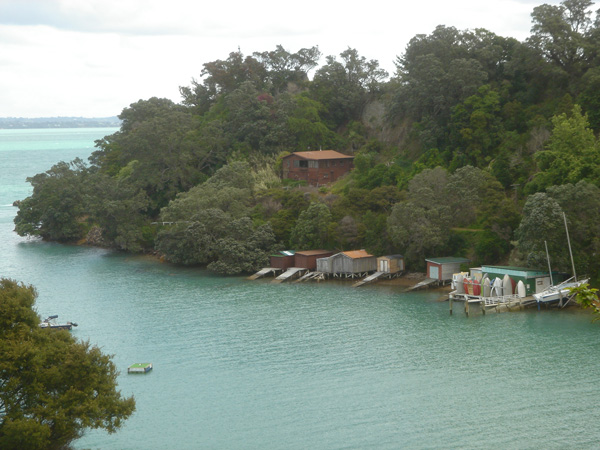
In Russell, a former whaling-crew hangout in the Bay of Islands, I saw a whale boat that set me to wanting to write another book about the Hollow Earth, Or at least a story about a runaway crew member who gets ta moko-ed. Also I picked up more Antarctica info in Christchurch and from an Antarctic fiction anthology called The Wide White Page, edited by the poet Bill Manhire, and printed by Victoria University Press, Wellington, NZ, 2004.
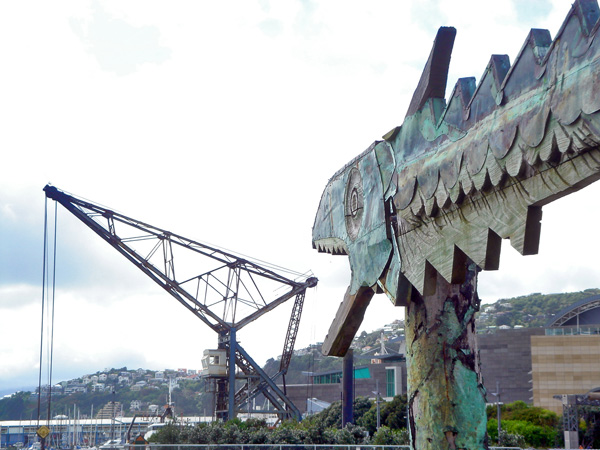
By the way, the Victoria press just published a collection of essays on Confronting Climate Change: Issues for New Zealand co-edited by my hacker friend Nick Chapman’s father Ralph Chapman. Maybe I can figure out a way to spend a semester in Wellington; I’d love to see more NZ, and to be closer to the entrance to the Hollow Earth.

The Wide White Page includes a good story by Ursula LeGuin called “Sur” about some women who clandestinely trek to the South Pole before any men. But, being women, they don’t bother registering their priority. Ursula’s writing always makes me feel like a diseased, cringing rat baring his fangs in an alley. A cockroach. I’m so unlike her utterly noble and well-balanced characters. That doesn’t mean I have to feel “less than.” It means I think Ursula’s characters aren’t true to life. It’s good being a rat. We’re hard to dislodge. We’re adaptable. And never forget, where there’s filth, there’s life.

Mur.

